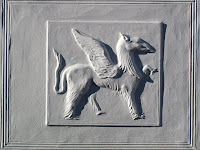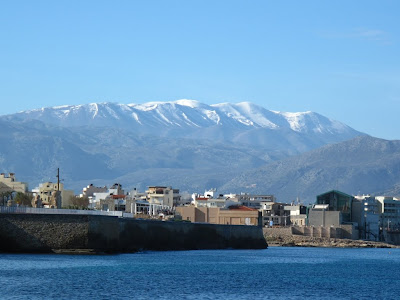

The main road to the south coast, took us to a Agia Galini, a very attractive seaside town. After walking the town & enjoying a coffee beside the harbour, we set off on a circular drive around the Amari Valley. This drive would be difficult without the detailed instructions in the AA Crete guide book.

We felt as if we had seen the real Cretan village scene, after completing the 100k round trip.

Many of the villages had a war memorial, which in particular remembered the German slaughter of these villages, just the same as Anogia. Most of the houses have been rebuilt, as whole villages were destroyed, along with schools and even cemeteries.



The villages had real charm, from a distance, and were spaced about every 5k around the valley perimeter. Many had Byzantine churches, and one anomaly was a Venetian tower which we were able to climb for a rather windy view.
At the end of the drive, we visited another nearby coastal town - Matala. The interesting feature is the catacomb caves cut into the cliffs as long ago as Roman times, and lived in down through the centuries until the 1960s.

During our time on Crete we saw various ruins on our travels, and after leaving the coast, we passed two more extensive sites. The first was Faistos, a Minoan palace, and Gortys, a Greco-Roman city. Both sites were closed by the time we arrived, but what could be seen from the road was interesting, especially a 1,600 year old protected olive tree at Gortys, which has grown around a Roman pillar. Both are so old now, we weren't sure which was holding the other up!



 One of the delights of winter is walking on a frosty morning over wet farmland, frozen solid.
One of the delights of winter is walking on a frosty morning over wet farmland, frozen solid. with the painted pargetted and timber framed buildings leading the eye to the large, elaborate church, past a very stylish 14th century Guildhall. Behind the village is a windmill, still in working order.
with the painted pargetted and timber framed buildings leading the eye to the large, elaborate church, past a very stylish 14th century Guildhall. Behind the village is a windmill, still in working order. Our 9 mile circular walk turned back at Great Easton, a smaller, but quite charming village, set around a green.
Our 9 mile circular walk turned back at Great Easton, a smaller, but quite charming village, set around a green.







































